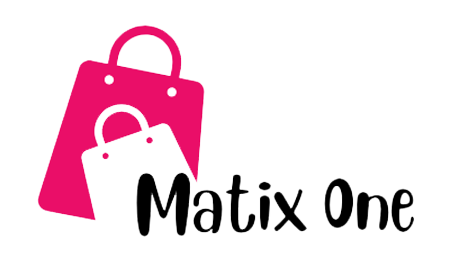Whoa! Ever felt like juggling crypto assets across chains is like spinning plates on a unicycle? Seriously, it’s a wild ride out here. I was diving into custody options recently, and something felt off about the usual wallets—they often lack seamless integration with centralized exchanges, which, for traders like us, is a huge pain. Especially when yield farming demands quick moves and multi-chain agility.
Okay, so check this out—yield farming, custody, and multi-chain trading aren’t just buzzwords thrown around by crypto enthusiasts. They’re intertwined in ways that can either make your portfolio thrive or crash spectacularly. Initially, I thought having multiple wallets was fine, but then I realized the real bottleneck is the fragmented experience that slows you down when you’re hunting for the best APYs or executing trades.
Here’s the thing. If your wallet isn’t plugged into a robust exchange, you’re basically working with one hand tied behind your back. That’s why I’ve been messing around with the okx wallet. It’s not just another wallet; it’s like having a backstage pass to the OKX centralized exchange, enabling you to hop between chains and trade without the usual friction.
Yield farming itself is a beast of opportunity and risk. You want to stake assets on multiple chains to maximize returns, but the custody solution has to keep your keys safe while allowing fluid access. On one hand, cold wallets offer security but kill speed. On the other, hot wallets are convenient but can be sketchy. The okx wallet tries to strike a balance, but I’m still cautious—no system is bulletproof yet, right?
Hmm… What really surprised me was how multi-chain capabilities can turbocharge trading strategies. Instead of being stuck on Ethereum or Binance Smart Chain, you’re free to explore Fantom, Avalanche, or even lesser-known chains. This opens doors to arbitrage and farming opportunities that many traders miss out on.
But, oh man, the complexity! Managing assets across chains can quickly become overwhelming. I’ve seen people lose track of funds or fall prey to phishing attacks because their custody approach was all over the place. That’s why integration with a centralized exchange like OKX, through a wallet like the okx wallet, is very very important. It consolidates control without sacrificing flexibility.
Still, I’m not 100% sold on the idea that one wallet fits all scenarios. Sometimes, you just want a pure DeFi experience, disconnected from centralized players. However, for traders juggling yield farming and multi-chain dex trades, the convenience of having custody and exchange integration in one place can’t be overstated.
Check this out—imagine farming on Polygon, then swiftly swapping assets on OKX without moving your tokens through multiple bridges or wallets. The time saved is huge, and time is money in crypto. Plus, the reduced transaction risk is a bonus.

Now, about security. The okx wallet employs advanced encryption and multi-factor authentication, but I’m always a bit wary. No matter how sophisticated, every custody solution has its attack surface. I mean, hackers evolve daily, and so must we. My instinct says never keep all your eggs in one basket—even with top-tier wallets.
Still, the user experience here is pretty slick. The wallet supports multi-chain assets natively, which means less fumbling between interfaces. For yield farmers, this reduces friction when switching between protocols and staking pools. Plus, the direct connection to OKX exchange means you can execute trades or withdraw funds instantly.
Interestingly, yield farming itself is evolving. We’re seeing more cross-chain farms that require simultaneous staking on different platforms. Without a custody solution that can handle these multi-chain demands seamlessly, you’re basically handicapped. This is where a wallet like the okx wallet shines.
But, let me back up a bit—on one hand, fully decentralized custody appeals to purists. Though actually, the trade-offs in speed and usability can be brutal for active traders. So, yeah, I get why some prefer the hybrid approach that combines centralized exchange benefits with decentralized asset control.
Here’s what bugs me about the current landscape: fragmentation leads to missed opportunities. If you’re hopping from MetaMask to Ledger to different exchanges, you waste precious time and constantly expose yourself to transfer risks. The dream is a custody solution that’s secure, multi-chain, and exchange-integrated. The okx wallet is one of the few players trying to check those boxes.
Okay, so I’ll admit, the wallet ecosystem is crowded, and it’s easy to get overwhelmed by choices. But from my experience, integrating custody with a centralized exchange is becoming a must-have for yield farmers who want to stay competitive and nimble.
Why Multi-Chain Trading Isn’t Just a Fancy Buzzword
Multi-chain trading is like having access to multiple markets without the hassle of currency conversion booths at every corner. You can spot arbitrage, jump on new DeFi launches, and hedge across different ecosystems. Initially, I thought this was mostly for whales or institutional traders, but it’s actually accessible to anyone with the right tools.
Here’s the kicker—without a wallet that supports multi-chain operations smoothly, you’re stuck in siloed ecosystems. You might miss out on a lucrative farm on Solana or a promising token launch on Avalanche simply because your wallet can’t handle those chains or your exchange doesn’t support seamless swaps.
So, how does the okx wallet come into play? It acts as a bridge—figuratively and literally—between multiple chains and the centralized OKX exchange, allowing for quick trading and easier asset management. This reduces the time spent on tedious bridging processes, which are not only slow but sometimes risky.
Honestly, the user interface is clean and intuitive, which matters more than you’d think. Many multi-chain wallets overload you with options and cryptic messages, causing rookie mistakes. This wallet strikes a good balance, making it easier for traders to focus on strategy rather than tech headaches.
One downside: sometimes the wallet struggles with newer chains or emerging DeFi protocols. This is expected, but it means you gotta keep your ear to the ground and not assume “all chains are supported.”
Anyway, this makes me wonder—will we soon see yield farming strategies that fully exploit multi-chain ecosystems through such integrated wallets? The potential is huge, but so are the risks if the custody layer is weak.
Oh, and by the way, managing private keys securely while juggling multi-chain assets is a challenge. The wallet uses encrypted local storage and two-factor authentication, yet I still recommend pairing it with hardware wallets for cold storage of your big bags.
In my view, this hybrid custody approach—combining hot wallet convenience with cold wallet security—is the sweet spot for serious yield farmers and traders. It’s not perfect, but it’s a lot better than juggling separate wallets and exchanges.
Something else I noticed: the okx wallet supports direct staking and farming on some protocols, which cuts down on the usual tedious steps of manual staking through multiple interfaces. It’s still early days, but that kind of integration could really change the game.
Seriously, if you’re deep into DeFi and yield farming, finding a custody solution that blends security, multi-chain support, and exchange integration isn’t just about convenience—it’s a competitive edge. And that’s why I keep coming back to the okx wallet.
So yeah, the crypto world is messy and fast-moving. But wallets like this are helping tame the chaos, making multi-chain trading and yield farming less like a juggling act and more like an orchestrated symphony. Still, I’ll keep an eye out for better security features and wider chain support. The space evolves fast, and so do my expectations.
